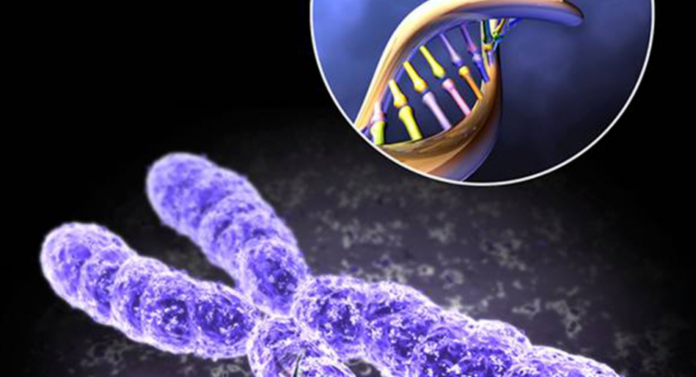
Scientists have long known that shortening of human telomeres — the caps that protect our chromosomes from deterioration — is associated with aging and disease. Now, researchers from the Stanford University School of Medicine have found a way to increase the length of these telomeres. The findings, published in in The FASEB Journal, could open the door to novel treatments for many age-related and genetic conditions.
“This study is a first step toward the development of telomere extension to improve cell therapies and to possibly treat disorders of accelerated aging in humans,” said co-author Dr. John Cooke, MD, PhD, formerly a professor of cardiovascular medicine at Stanford and now chair of cardiovascular sciences at the Houston Methodist Research Institute.
Chromosomes, the thread-like structures situated at the end of DNA strands, contain all our genetic information. Telomeres protect our chromosomes from becoming damaged during cell division. In young humans, telomeres are about 8,000-10,000 nucleotides long. However, telomeres become shorter with each cell division and can reach a point where they are no longer able protect the chromosomes, leaving them open to deterioration. This leads to aging and disease development.
Studying human cells in the laboratory is important for finding new ways to treat such diseases, but the team says the shortening of telomeres makes this challenging; it only allows researchers to monitor cells over a few divisions before they die. But the Stanford team says they have found a way to extend the length of telomeres, which could increase the number of human cells available for studying.
New method increased telomere length by up to 10%
For the study, the team used a modified type of ribonucleic acid (RNA) that contained the coding sequence of TERT to try to increase telomere length. TERT is the active component of telomerase – an enzyme expressed by stem cells that maintains the health of telomeres as they are passed to the next generation. Though stem cells express TERT, the researchers note that most other cell types do not.
The researchers found that introducing as few as three applications of the modified RNA (called modified TERT mRNA) to human cells over a few days increased telomere length by around 1,000 nucleotides — representing a 10% increase in total telomere length. Additionally, the results showed that human skin cells treated with modified TERT mRNA divided around 28 more times than those that remained untreated, while treated human muscle cells divided around three more times.
The researchers say they were pleasantly surprised to find that modified TERT mRNA effectively increased telomere length, explaining that previous attempts to deliver mRNA-encoding TERT caused an immune response against telomerase, which could be deleterious.
“In contrast, our technique is nonimmunogenic,” said study co-author Dr. John Ramunas, PhD. “Existing transient methods of extending telomeres act slowly, whereas our method acts over just a few days to reverse telomere shortening that occurs over more than a decade of normal aging. This suggests that a treatment using our method could be brief and infrequent.”
Findings may lead to new treatments for genetic, age-related disorders
The researchers say their new technique could help doctors develop new ways to prevent and treat age-related diseases and genetic conditions that are associated with telomere shortening, such as Duchenne muscular dystrophy – an inherited neuromuscular condition estimated to affect 1 in 3,600 male infants in the US.
“Now we have found a way to lengthen human telomeres by as much as 1,000 nucleotides, turning back the internal clock in these cells by the equivalent of many years of human life. This greatly increases the number of cells available for studies such as drug testing or disease modeling,” said study co-author Dr. Helen Blau.
The authors say there are also implications for treating other conditions of aging, such as diabetes and heart disease. “This has really opened the doors to consider all types of potential uses of this therapy,” added Dr. Blau.
The researchers now plan to investigate how modified TERT mRNA affects other types of human cells.
